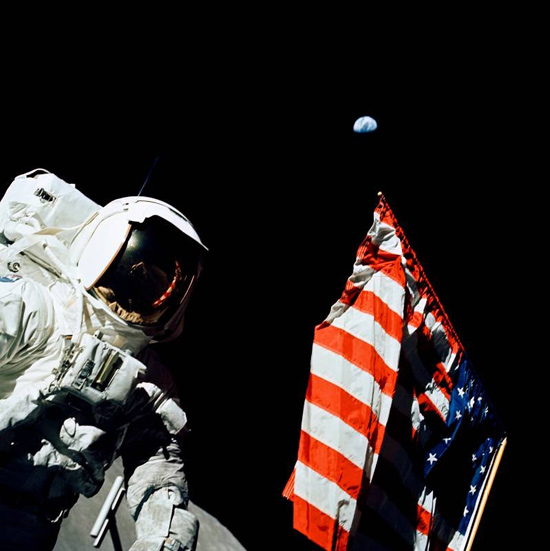

I am pretty sure that every once in a while we all have those moments when we reflect on our lives. Whether it is to ponder what it was, what it could have been, what it is, or what it will be. All of those situations refer to our individual circumstances, and in this particular instance my astronomical interests.
While sitting at the window in my home recently I had one of those moments. I was looking out at the night sky and remembered the incident that catapulted my interests in the NASA space program, astronomy, and eventually engineering. It all began 35 years ago this month at the Kennedy Space Center.
I had just turned 10 years old and was on a trip with my family to Florida. But this was no ordinary trip. IBM had arranged for a company group trip for a week-long stay at Disney World via an AMTRK train leaving near the IBM facility in New York where I grew up. The trip itself was quite eventful since what should have been a direct 12 hour ride turned into a major event for a kid. The door to our car, between train cars, would not close so the noise was unbearable after a while. Later on we saw fire trucks driving alongside the train and passing us. We then realized what was happening while looking out the window. The fire trucks were there to put out the fire in the engine up front. So after more than 24 hours cooped up in the train with a lack of food or water we finally arrived in bright, sunny Florida.
As luck would have it that happened to be one of the coldest weeks Orlando had seen in a while with frost and ice on the orange trees. My dad took this beach down-time as an opportunity to take us on a visit to the Kennedy Space Center.
It was only a couple of months since the Apollo 17 mission and my dad was probably more excited than I was to make the trip to the cape. I was a bit too young to realize what the trip was going to entail. My attitude sure changed as soon as I cast eyes upon the massive launch towers and toured the inside of mission control and the assembly buildings. But the most memorable part of the whole trip down south was yet to come.
For those of you who have had the chance to experience it first hand, you may remember that on the grounds of the facility were the disassembled components of various Mercury, Gemini, and Apollo spacecraft. It became heaven (space) on earth for me as I ventured through it, all of it, over and over. Until I came upon something I found quite amazing.
A spacesuit! A truly American original Apollo mission spacesuit right before my very eyes! My mind couldn’t stop racing with all kinds of images of me exploring everywhere possible outside of our atmosphere as I stared intently at that amazing gold tinted visor. But didn’t I catch a glimpse of this spacesuit in a different area of the grounds earlier? And why was it propped up against a railing? These questions had not yet really percolated to the surface of my consciousness, but they were there.
I began to strain and try to see eye-to-eye into the visor for several minutes as other kids gathered around when all of a sudden it turned its head to look directly at me, eye-to-visor, and stood fully erect over me. Well not to be outdone, my dad claims I leapt high enough in fear to dunk a basketball. I don’t remember screaming, but it was most likely drowned out by the laughter of the surrounding adults who were watching the events unfold as the astronaut was only taking a short rest by allowing the weight of his pack to sit on the railing. I later found out that he couldn’t resist surprising me any longer since I had been tapping at his visor non-stop to see if he was real.
To this day, 35 years after the fact, my family still reminds me of that episode.

AS17-134-20384 (December 1972)—Scientist-astronaut Harrison H. Schmitt, lunar module pilot, is photographed next to the deployed United States flag during lunar surface Extravehicular Activity (EVA) at the Taurus-Littrow landing site. The highest part of the flag appears to point toward our planet Earth in the distant background. This picture was taken by astronaut Eugene A. Cernan, Apollo 17 commander. While astronauts Cernan and Schmitt descended in the Lunar Module (LM) to explore the Moon, astronaut Ronald E. Evans, command module pilot, remained with the Command and Service Modules (CSM) in lunar orbit.